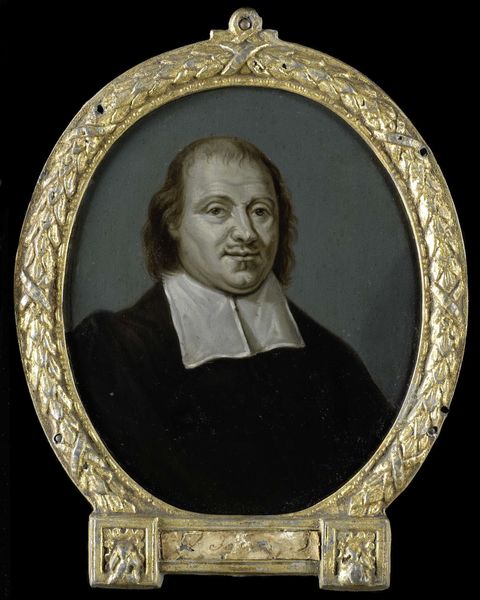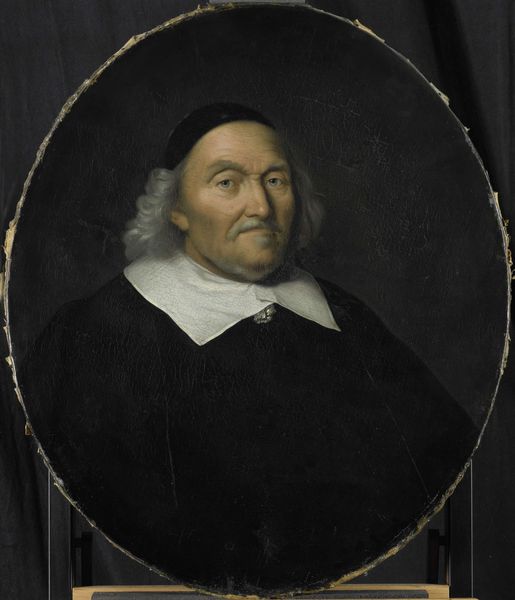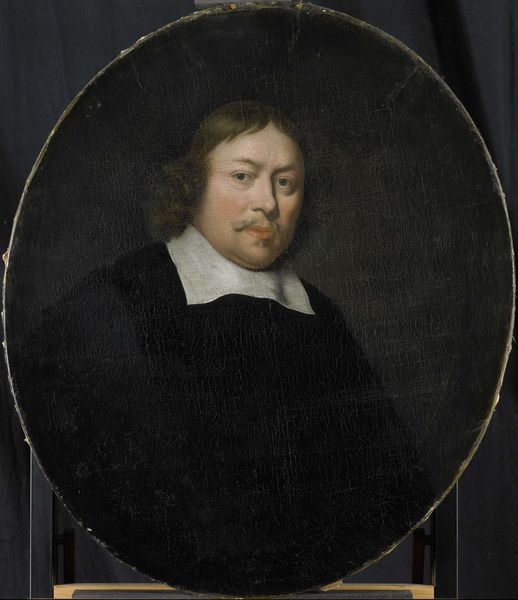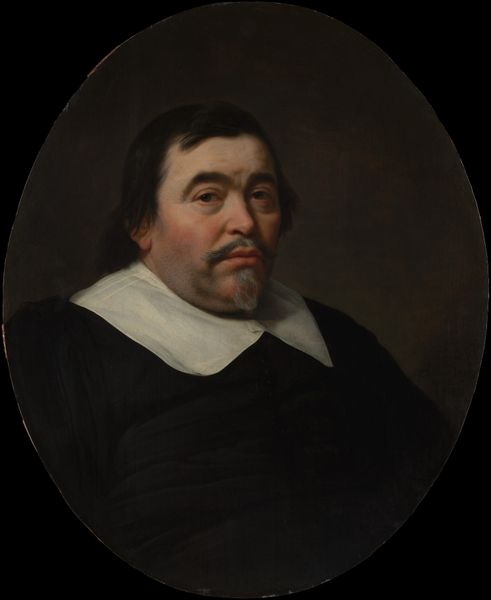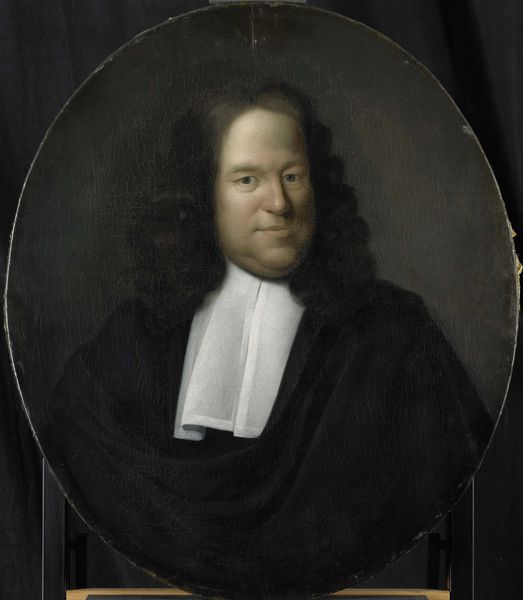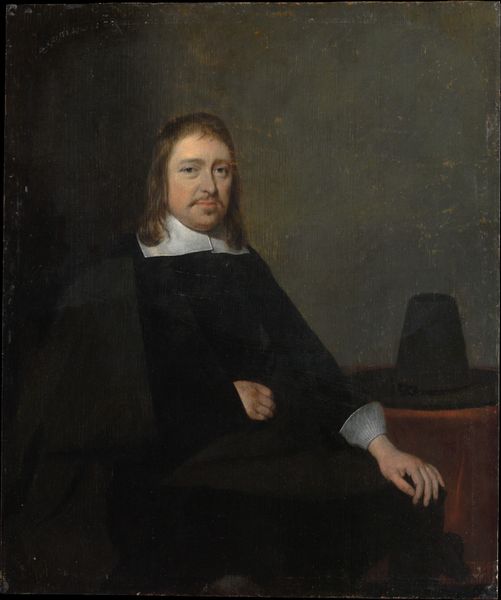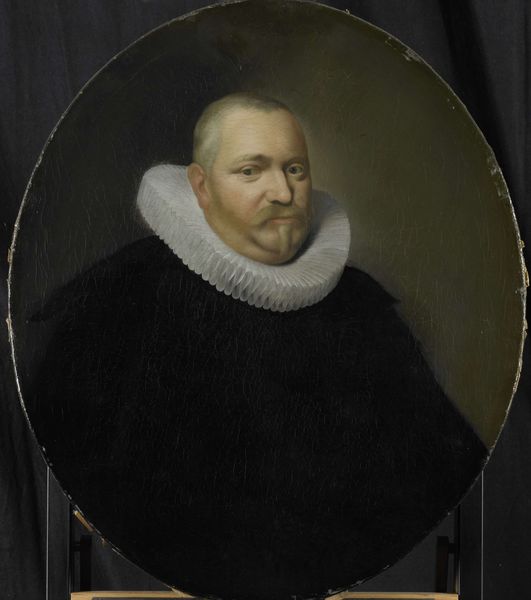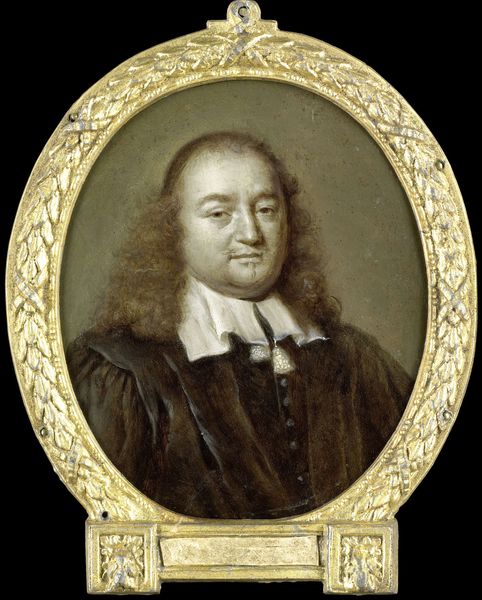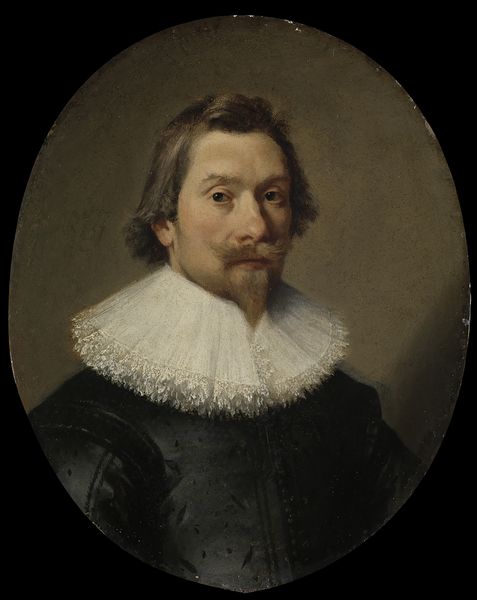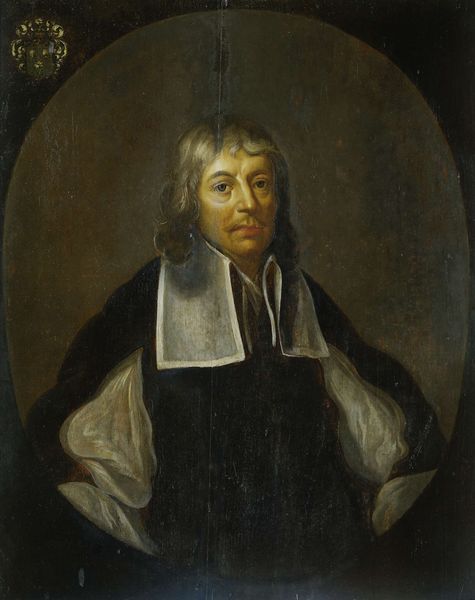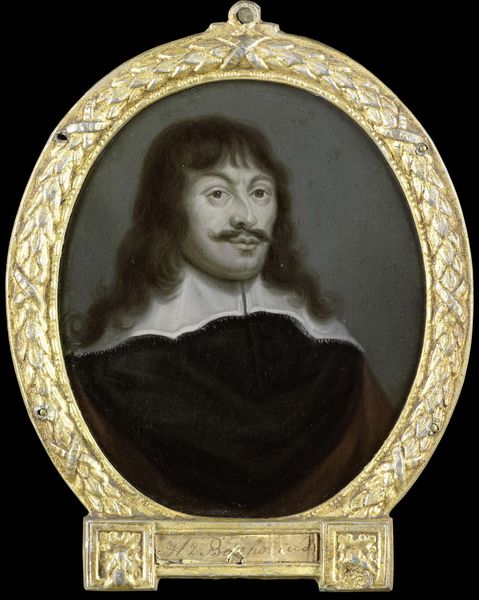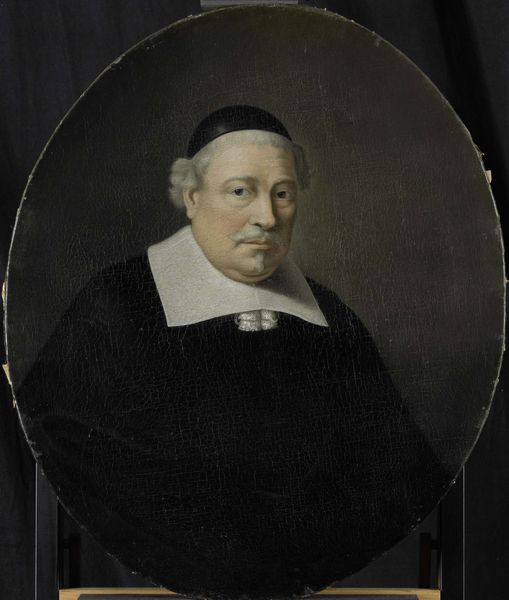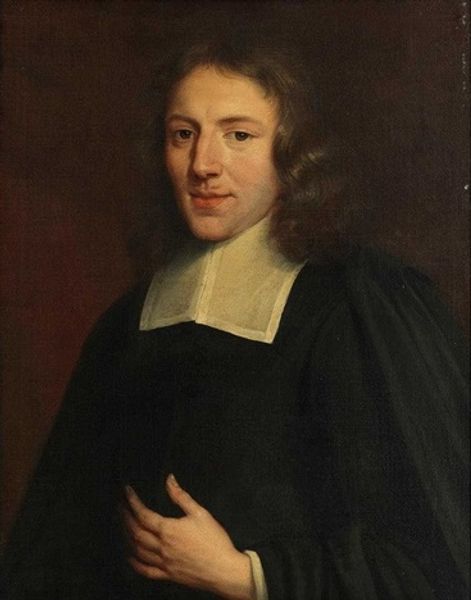
Portrait of Cornelis van den Bergh, Director of the Rotterdam Chamber of the Dutch East India Company, elected 1659 1695 - 1722
0:00
0:00
oil-paint
#
portrait
#
character portrait
#
baroque
#
portrait image
#
portrait
#
oil-paint
#
portrait subject
#
portrait reference
#
portrait head and shoulder
#
history-painting
#
facial portrait
#
portrait art
#
fine art portrait
#
celebrity portrait
Dimensions: height 82 cm, width 68 cm
Copyright: Rijks Museum: Open Domain
Curator: Let's discuss this rather dignified portrait by Pieter van der Werff: "Portrait of Cornelis van den Bergh, Director of the Rotterdam Chamber of the Dutch East India Company, elected 1659", dating to the late 17th or early 18th century. Editor: Somber, wouldn't you say? The oval composition focuses tightly on the subject, enveloped in swathes of black, emphasizing a somber, serious presence. Curator: Absolutely. Considering Van den Bergh's role in the Dutch East India Company, this visual representation conveys power and authority. His black attire, punctuated by the stark white collar, underscores the gravity of his position within the company and society. It's also the expected formal garb for portraits during that period representing the upper echelon of Dutch society. Editor: Note the limited palette though! Terse is a descriptor that comes to mind; tonally tight. This creates a strong contrast between his pale complexion and the enveloping darkness and contributes to that solemn mood, does it not? What is conveyed formally is not power, but authority of administration and governance. Curator: I concur with your astute assessment. Van der Werff has subtly used chiaroscuro to model the face, drawing attention to the subtle details around the eyes and mouth to humanize Van den Bergh. It's more nuanced than simple representation. I can discern some vulnerability beneath that official front. Editor: Yes, precisely! It is that sliver of subtle vulnerability created through tonality, that adds an element of narrative intrigue – what sort of tensions did his official role embody? Curator: That is where my perspective merges with yours! We must acknowledge this work as not simply being an image representing status and wealth, but also offering glimpses into a real individual's presence within a complex historical period. The artwork has that subtle depth beyond pure visuality or formality. Editor: Ultimately, examining van der Werff's choices allows us to consider how this oil portrait served both personal and political narratives, bridging art and the individual experience in a specific moment in history. Curator: A perfect synthesis.
Comments
No comments
Be the first to comment and join the conversation on the ultimate creative platform.
